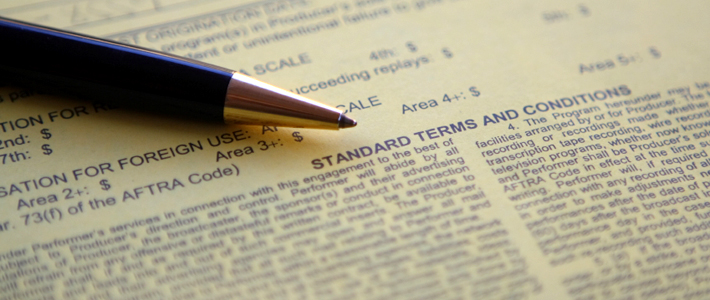
Do I hear a 20? A 30? That gentleman in the back, please raise your plate higher – is that a 45?
Table of Content
45, going once. 45 going twice – going once, going twice and GONE!
Sold to the gentleman in the pinstriped black suit!
Of course you’ve heard this sort of dialogue before. If you’ve been to any sort of auction worth its salt, or if you’ve at least seen this play out in a movie (let’s face it, filmmakers love auction scenarios for their vibrancy and sheer power) – then you know what we’re talking about.
Of course, carrying out that sort of auction in today’s world would be nothing short of chaotic. Especially for companies with lucrative products that have bidders from all over the world – even Skype could not compartmentalise the noise.
Also, the product of today has more details than ever. Bidders demand, and love details that will convince them to bid higher, swiftly and acquire the product.
Of course the product has to be worth its salt – or the idea, in the very least. If there’s one thing to know in today’s context, it is that the presentation of ideas with conviction, finesse, adequate detailing and targeted punch-lines is what seizes the day – or in this case, funding in the form of capital, resources and expertise.
For the sake of this document, we obviously assume that you have a brilliant idea at hand. This is where the RFP comes in, and we are here to show you that it’s nothing to be perplexed about when the time comes to write your own RFP.
Let’s begin with the basics – what is an RFP? The reason we mentioned auctions is because the RFP is the dialogue of the bidding process, made into a document.
When a company wishes to see a project come to life, it can either painstakingly invest its own time and resources, or can do something better – seek help from others, resulting in a collaborative, faster and focused effort that catalyses and speeds up the completion of the project. For this collaboration, the company can issue an RFP, or a ‘Request for Proposal’. In return, the bidder will send their own proposal for the services they can offer, which you can evaluate at length.
Upon issuing the RFP, companies can begin placing bids for the project’s completion. One can see why an RFP is so crucial – if your bidders don’t quite know the scope of your project, the bidding process and the terms of the contract in clear, concise and lucrative terms – then there is no reason as to why they should invest in your project! In addition, a good RFP can draw in multiple bidders, where you can then take your pick of the lot, depending on which company or companies are ideal for the completion of your project.
Here, we’ll try including certain crucial aspects of writing an effective, potent RFP.

This is the section of the document that provides a succinct summary of your project. You should ideally include the background of your company, and highlight why you are in a favourable position to be even pursuing this project in the first place. Keep in mind that the length of the RFP depends on the scope of your project, and the sheer amount of resources you require for completion.
This section presents a brief overview of your organization and its operations. Ideally, you should include a healthy amount of statistics, customer demographics, and psychographics. The abilities of your organisation, and its weaknesses should also be outlined here. Remember, honesty is the best policy here, as the more transparent you are, the more likely are people to trust the scope and idea of your project, and the more likely they are to invest.
Some RFP’s have this section after their Statement of Purpose, which becomes the opening salvo for your RFP – for RFP’s selling truly revolutionary project ideas, this may be a more favourable approach.

This section is the more crucial, some would say, as this is the punch-line for your project and the kind of help you’re setting the bid for. The kind of services you need, along with the objectives of the contract need to be clearly outlined here. Kindly note that this is also not where you need to be going into detail – it is a ‘statement’ of purpose for a reason. Drive your point home by being concise, so that the bidders also don’t waste their time if they simply cannot provide the services that you are asking for.

This section outlines the bidder’s responsibilities in detail. This section is becomes particularly important when there are multiple services being solicited – with many providers at the other end, so that responsibilities are clearly delineated.

Again, most proposal formats will tell you to include this somewhere below – but we believe in reformatting, and stating this in the beginning. If the bidder has a clear idea of what qualifications are exactly required to even be involved in the process, then they may proceed – otherwise, why bother going further with the RFP?
Soliciting examples of work from bidders always helps – so does the expected company history, executive background, information on company size and organisational charts.

This section is for detailing what is expected of the provider, or the company that is bidding for project completion rights. Minimal performance standards, and metrics for measuring this performance are going to go in here – be very careful about choosing measures, and also include contingency plans in case standards are not being met, so that the project is not ultimately compromised.

Outline the deliverables here, include whatever is necessary: products, plans and other documents that need to be handed in and so on. Optimizing your delivery schedule and laying it out here in no uncertain terms should be another element that goes in this section, so that the bidder knows exactly what is required at what time of the project duration.

This section will include the duration of the contract, and more importantly, talk about the options for renewal – if any in the first place. The process timeline in bigger RFP’s occupies a section of its own. For shorter ones, however, you should integrate it here as most of the preceding elements are the time-bound characteristics of the contract, and the flow of the document becomes smoother. This timeline includes the process and various time-based checkpoints for clearing the process – like the submission of proposal documents, and when the pre-project conference should be held, and so on.

While most companies will try hiking payment itself to encourage bidders so that they deliver peak performance, a neat trick used by those wishing to juice the bidders is incentivisation. By setting a moderate and adequate price for the service in question (this is your prerogative, and again depends on the kind of service required), and adding incentives to the mix is known to improve performance. Include the standards of achievement clearly, and escalate incentives accordingly.
In case you are not clear on these perimeters, your RFP can also ask bidders to list pricing a certain way or describe what exactly should be included in the pricing for the proposal. This may describe specific items to include or exclude depending on the project or task.
This section also has another crucial aspect of the RFP – Containment. If the project does not go as planned, which will be measured by the metrics mentioned in point 4, then you need to contain the damage – the best way for this is to include penalties for subpar performance, again, setting clear standards for the same.

A no-brainer for any company proposal – all the technical writing goes in here, where you outline standard and project-specific (formulate these with due care, and take the legal help if necessary) terms and conditions.

Most of the criteria are integrated in the previous sections of the document – however, the RFP of a grander scope should have a dedicated section for these. This describes exactly how proposals will be evaluated. It should include a list of criteria that will be reviewed and describe what is suitable for each of the criteria. This is the detail oriented section, and the extensiveness of the criteria will determine how clear proposals submitted to the company themselves are – so do not hold back here.
That’s it. You can go and do a study of your own for yet other guides – but we believe we’ve hit the mid-point between a shoddy RFP that has little-to- no details in the name of economical expression, and an RFP that looks like ten-thousand research tomes packed in one. Following these guidelines, along with a healthy, comprehensive writing style shall result in a powerful RFP.
